What is an ITSM Rapid Review?
Our Rapid Review service offering is ideal for organisations that want to focus on eliminating the things that are stopping their processes from working effectively and efficiently. Combining IT service management and Lean IT approaches, it highlights waste in current or missing activities and processes and provides a roadmap for working on the most important items discovered.
Unlike a formal maturity assessment, this service focuses on waste identification, rather than aligning to any specific ideals of a particular process or seeking to measure or achieve a level of capability or maturity. It can also complement or supplement formal maturity assessments where in-depth evaluation of processes is not required.
The outcome of this service is an exit briefing which includes an overall summary of the results and a roadmap for the following improvement journey.
How Rapid Review will assist your organisation?
- Obtain an external perspective on where process, practice, or service inefficiencies might be occurring in their current ways of working;
- Start improving processes, but can’t afford the time or cost to undertake a full capability maturity assessment
- Identify worthwhile options for service and process improvement (such as being driven by business objectives, sudden availability of funds)
- Prioritise improvement opportunities. Many organisations are faced with an abundance of things that they know need improvement, but aren’t sure where to start for best results
- Establish or refresh a Continual Service Improvement capability and wish to use the Rapid Review results to establish momentum and a set of opportunities to work on
Rapid Review Objectives
- Understand your organisations current situation.
- Identify the biggest constraints and irritants (waste) of your services and processes/practices.
- Determine relevant and realistic improvement options.
- Agree improvement priorities
- Develop an improvement roadmap to act upon the improvements.
Rapid Review Deliverables
- Engagement briefing presentation
- Exit briefing and Opportunities Identified presentation
- Roadmap presentation
- Improvement Opportunities workbook
How the review works
- Our team assist you in establishing the scope for your review along with an agreed start date.
- The review is approx.10-days in duration; depending on the number of processes/practices identified for the review. Up to 10 processes/practices are normally assessed within this timeframe.
- The consultant-led component commences (this can be onsite or virtual) with a briefing to the interviewees and stakeholders, followed by a series of guided discussion sessions to describe and explain current ways of working. These sessions may be supplemented by viewing and use of tools, documents and forms as needed.
- The consultant identifies aspects that are reducing process quality and tests the validity of potential improvement actions with the session attendees
- From this, a set of improvement opportunities and related value propositions is collated for client review and prioritisation
- The client and consultant confirm the preferred options for action and the consultant produces the roadmap based upon those preferences, considering any constraints communicated during the engagement.
- The client uses the Roadmap to seek approval to proceed with the improvements identified
Preparation for Rapid Review
For a successful review there are a few things to consider. Ensure everyone is available and understands what the objectives are and the value of the outcomes.
Confirm the Processes/Practices
- It is not unusual to identify out-of-scope opportunities, but specifying the practices makes it easier to invite people and keep on topic. We can set up a call with Shane to discuss the practices.
Schedule the sessions
- Each session should focus on a single practice/process – can be ITIL® or any other framework.
- Allow an hour, or 90 mins if the subject is problematic or controversial.
- Invite the people that perform the work, manage the work, or use the results of the work. Depending on the topic, this may include:
- Process owners
- Service owners
- Developers
- Tech support staff
- Service Desk members
- Relationship management roles
- Senior leadership
- Others who use the process or are affected by its outcomes
- Day 1, first meeting = Sponsor discussion to confirm scope and any last-minute needs
- Next meeting = kick-off session for all to explain the approach, (not more than 30 mins) followed by the first session (ie invitees for that session remain, the others depart)
Communicate
- Why are they attending? To help find the pain points in current practices and the benefits of resolving them.
- What do they need to do?
- Attend the sessions
- Discuss the current practices
- Highlight areas of challenge and risk
- Suggest desired improvements
- Show examples where possible

